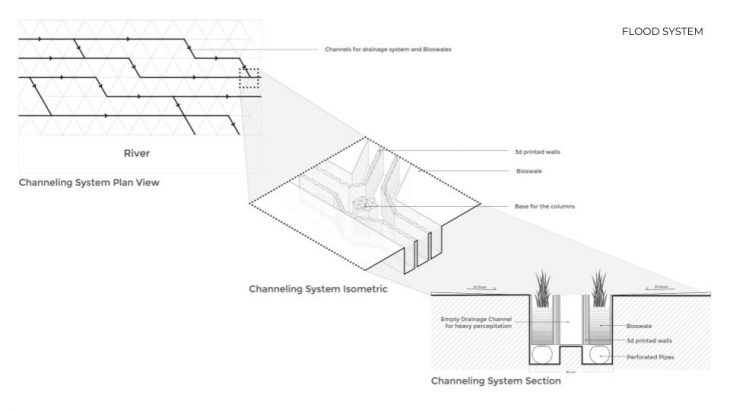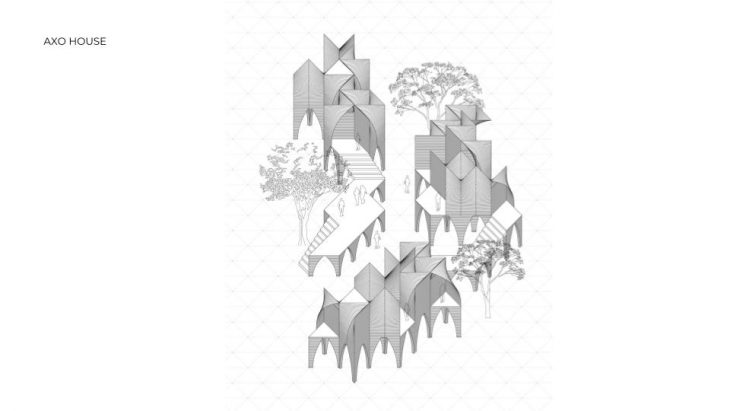Floods of Suleja – Additive Manufacturing in Architecture Scale
Site Introduction
Suleja is a city located in the Niger State of Nigeria. River Iku flows through the city, dividing it into two parts: the residential area are mainly on the north side of the river, and agriculture land in the south of the river. During the three months of the rainy season (July to September), flooding happens frequently in the area. The locals live very close to the river, due to agricultural activities and land ownership. The flood reaches 3-4 meters high, which not only destroys houses but threatens people’s safety.



Three main issues they face:
- There are no temporary shelters for the people to evacuate during flood season.
- The government has not yet provided alternative sites where they can move to.
- The drainage system is often blocked by garbage, therefore does not help relieve the water.
In order to solve these problems, we want to design an effective flood mitigation system, and housing built with local materials that have the potential of transforming into a public green space.

Flood Mitigation
To make the building resist water in the bottom and more lightweight on top, we propose to add different additives to the clay mix based on their qualities. More brick dust and casein in the bottom of the structure helps the material deal with water, and more rice husk on top reduces the weight. A network of channels is distributed based on the direction of water flow. They are divided into two parts: a container-like structure which functions like bioswales, and a drainage channel that is active during the flood season.


 Housing Design
Housing Design
3d printing gives us the opportunity to design non-standard houses that can adapt to different functions and site features. The flood channeling system allows four types of columns to print on, and the walls are a continuation of the columns. The different combination of vaults makes it easy to grow and create a series of interconnected houses. The benefit of 3D printing is that every household can customize their house as they wish.









Phasing Plan
- Phase 1: Government assist in relocating the residents temporarily and deconstruct the houses in the flood zones.
- Phase 2: Prepare the land and build foundation for cable robots.
- Phase 3: While printing the flood system, the residents help plant the vegetation in the bioswale.
- Phase 4: Printing of the columns and houses. In order to finish constructing before the flood season, we would require 5 robots.
- Phase 5: Between 1 to 3 years, after the government find a permanent place for the residents to move, the clay from the houses are recycled, and the platforms remain as a public park.

Floods of Suleja is a research project developed in Open Thesis Fabrication 2018/2019 by
Researchers: Yifan Liao, Yingxin Du, Payam Salahinezhad
Faculty: Alexandre Dubor, Edouard Cabay, Joaquim Melchor
